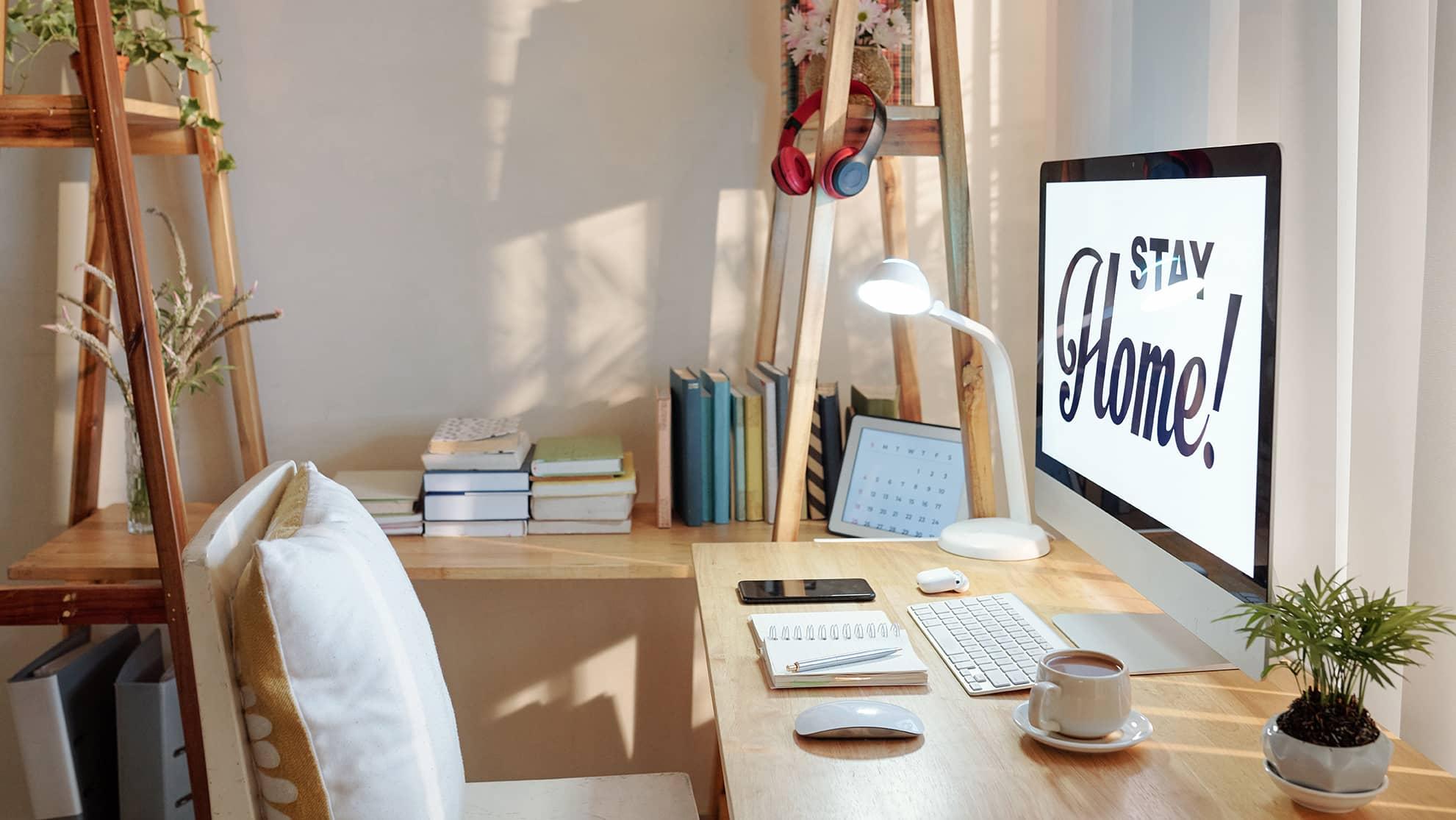The fact that a remote work model facilitates customized workspaces (as opposed to enforcing a one-size-fits-all office scheme) may be one of the reasons why it’s shown to boost productivity and all-around employee morale. It’s important to remember that the perfect home office setup won’t look the same for everyone, as it depends on a number of factors — what type of work you do, what sort of equipment you need handy and, especially, what shape your ideal conditions for focused productivity take on.
The fact that your team is working from home as opposed to commuting to one shared space every day is no excuse for being negligent about the basic health and safety protocols of a traditional office. Forgoing an office lease will yield considerable savings for the company, and it’s important for a portion of that to be invested back into the workspaces of your telecommuting team. You wouldn’t ask everyone to bring a chair from their dining room to work on at the office, the same way you wouldn’t ask them to buy their own ergonomic equipment there. As the world embraces remote work, it’s crucial for companies to also embrace more responsibility regarding the workspaces their employees will be performing from at home.
Living up to your company values should be a constant goal within your company, and part of it is letting all new remote employees know that their wellbeing is a top priority, and that they’re not expected to either work from unsuitable home furniture or pay for a decent workstation out of pocket. You ergonomically furnish an office and take care of the whole space so that your employees can focus on their work, safely. You need to have the same mindset once you pivot to remote.
Ergonomic equipment has come a long way in recent decades, now ranging from furniture to accessories and gadgets which address all aspects of physical wellness. Because striking the perfect balance between form and function is the founding principle of design, it’s helpful to ask yourself certain questions before you start setting up your remote team workspaces. Here is your go-to questionnaire for designing the perfect home office:





